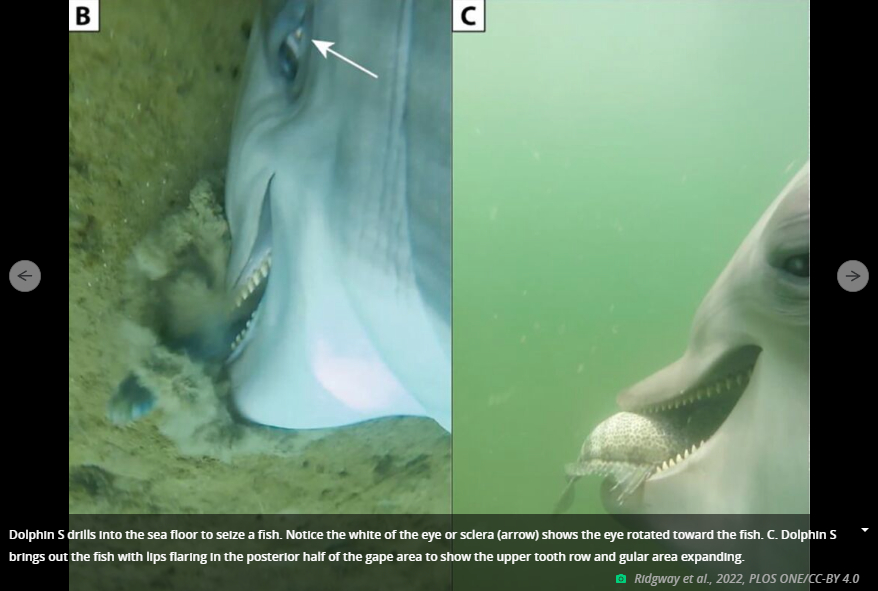Accompanying audio recorded dolphins squealing in victory when they captured prey.

Enlarge / "I spy with my dolphin eye... something that looks like prey!"
Scientists attached GoPro cameras to six dolphins and captured the sights and sounds of the animals as they hunted and devoured various species of fish—even squealing in victory at the capture of baby sea snakes, according to an August paper published in the journal PLoS ONE. While sound and video has previously been recorded for dolphins finding and eating dead fish, per the authors, this is the first footage combining sound and video from the dolphins' point of view as they pursued live prey while freely swimming. The audio element enabled the scientists to learn more about how the dolphins communicated while hunting.
Sam Ridgway and his colleagues at the National Marine Foundation in San Diego, California, have conducted previous research on dolphins. They thought they could learn even more about the animals' hunting and feeding strategies using inexpensive commercial GoPro cameras to record sounds as well as visuals. The high frames per second (60, 90, or 120 FPS) enabled them to observe changes in behavior frame by frame.
The US Navy trains captive dolphins to identify mines, among other uses. (Although the dolphins are technically free to swim away, most "choose" to stick around.) Two of those dolphins—identified as S and K—were led out by their trainer's boat into San Diego Bay. There they were given free rein to forage for food for 50 minutes. Footage was captured for 15 such outings for dolphin S, and 5 outings for dolphin K. Dolphins B and T wore cameras while swimming in an above-ground 6x12 meter sea water pool. Live Pacific mackerel, sardines, and Northern anchovies from a live bait supplier were set free in the pool so B and T could hunt. Finally, dolphins Y and Z were filmed incidentally capturing prey while freely swimming in the open ocean.
Over the course of the study, S caught 69 fish and K caught 40 fish, including spotted sand bass, barred sand bass, smelt, yellowfin croaker, California halibut, and pipefish. The fish were captured both near the surface (notably smelt) and, more frequently, on the sea floor, lurking in patches of vegetation. The audio revealed that S, for example, would buzz and squeal to find the hidden fish in the latter scenario, gobbling up a mouth full of the sediment, swallowing the fish and ejecting the sediment and any plant material back into the water. (One fish did manage to escape the dolphin jaws of death and swim away.)




T had been stranded on a Florida beach as a baby in 2013 and raised at Sea World of Florida, so T had never been observed catching live fish before. But after watching B capture prey, T caught on and began hunting with glee. "His captures were attended by much squealing," the authors wrote.
Dolphins Z and Y were also recorded squealing in victory while capturing prey, and Z actually fed on 8 (possibly newborn) yellow-bellied sea snakes—an unusual choice, since dolphins haven't previously been known to feed on sea snakes (although they have been observed playing "cat and mouse" with sea snakes). "Perhaps the dolphin's lack of experience in feeding with dolphin groups in the wild led to the consumption of this outlier prey," the authors wrote. Fortunately, "Our dolphin displayed no signs of illness after consuming the small snakes."
DOI: PLoS ONE, 2022. 10.1371/journal.pone.0265382 (About DOIs).
Dolphin Z catching sea snakes in the Pacific Ocean with head jerks and a victory squeal. Credit: Ridgway et al., 2022



Recommended Comments
There are no comments to display.
Join the conversation
You can post now and register later. If you have an account, sign in now to post with your account.
Note: Your post will require moderator approval before it will be visible.